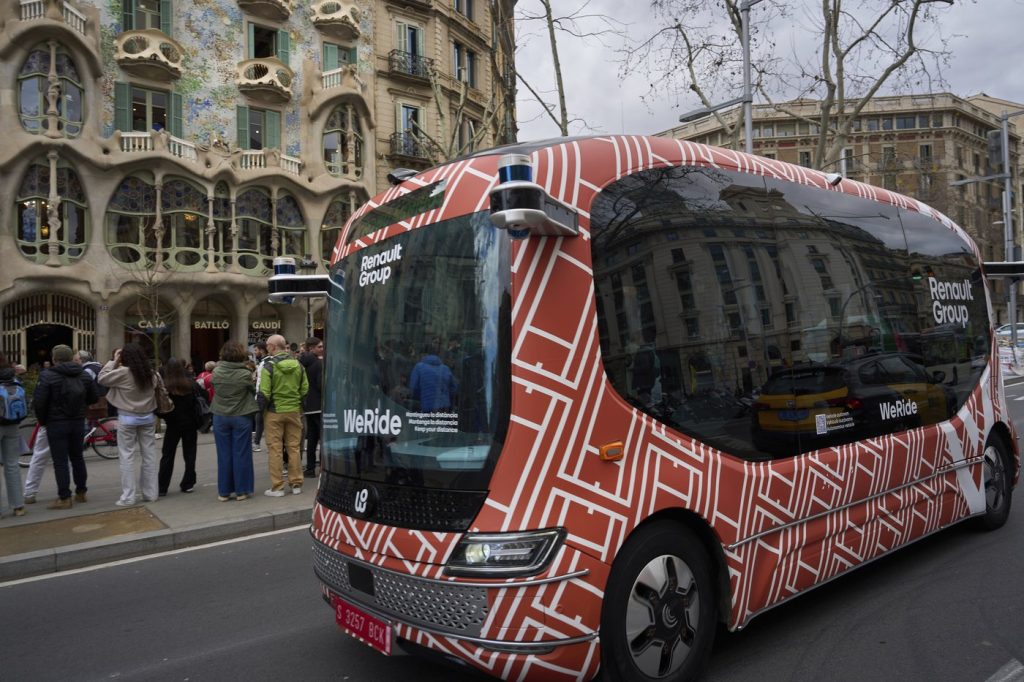BARCELONA, Spain (AP) — Commuters in downtown Barcelona have been experiencing a unique mode of transportation this week: a driverless mini-bus offering free rides. This autonomous vehicle, developed by Renault in collaboration with WeRide, operates on a 2.2-km (1.3-mile) circular route with four designated stops in one of the city's most fashionable boulevards.
Passengers can ride on the bus which operates without a human driver, smoothly navigating the bustling streets. The initiative is part of Renault's testing program for autonomous vehicles, which aims to showcase the potential of driverless public transportation. The bus autonomously pulls away from stops, changes lanes, and maneuvers through city traffic, providing a glimpse into the future of urban mobility.
This prototype was unveiled previously at the French Open venue and is now being tested on open roads in Barcelona. Renault also has similar testing projects ongoing in Valence, France, and at Zurich Airport, reinforcing its commitment to autonomous vehicle technology.
Among the curious riders eager to experience this innovation was 18-year-old student Pau Cugat. He remarked on the contrast between the driverless bus and a traditional combustion-engine city bus, stating, “Look, there is a bus of the past, and right behind it you have the bus of the future.” This reflects the excitement surrounding advancements in transportation technology.
While cities worldwide, including San Francisco and Tokyo, are experimenting with autonomous taxis and buses, Europe has been trailing behind the United States and China in driverless vehicle initiatives. Patrick Vergelas, head of Renault's autonomous mobility projects, acknowledged this gap, explaining that the U.S. and China have been more proactive in testing autonomous technologies. Renault’s goal is to demonstrate the feasibility of driverless public transportation in Europe, paving the way for future developments.
The electric driverless bus can operate for 120 kilometers on a single charge and reach speeds of up to 40 kilometers per hour (25 mph). Equipped with 10 cameras and eight lidar sensor arrays, it is designed to navigate complex urban environments safely, accommodating the presence of cars, motorbikes, and pedestrians. Renault asserts that the bus can effectively and securely traverse the busy streets of Barcelona.
Carlos Santos, from Renault's autonomous driving group, reported a variety of reactions from passengers who participated in the test rides. While some expressed joy, others displayed disbelief or anxiety, even attempting to open the doors during their ride. Santos emphasized that the experience was intended to be safe, a sentiment echoed by city officials who noted that there have been no reported accidents involving the experimental bus.
As this trial period progresses, the reactions and feedback from passengers will play a crucial role in shaping the approach to deploying driverless vehicles in urban settings. The initiative highlights a significant step towards integrating advanced technologies into public transportation systems, while also raising essential discussions about the future of commuting in rapidly evolving urban landscapes.










